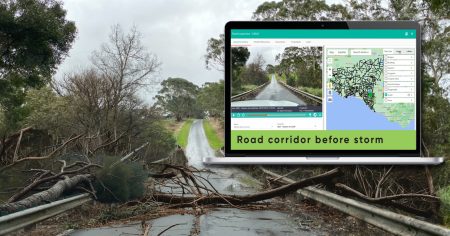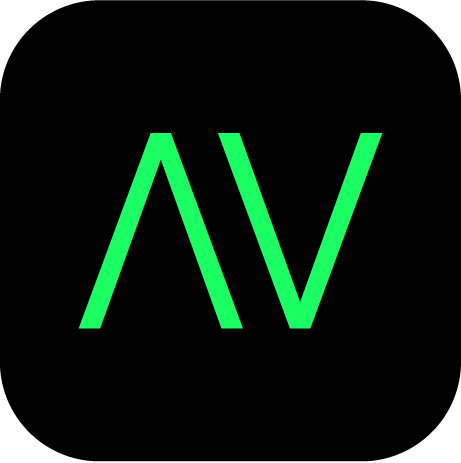Maintenance Management Software for Infrastructure

Maintenance Management Software for Infrastructure
Introduction
Managing infrastructure assets across Australia’s vast road networks and transportation systems presents unique challenges that demand intelligent solutions. Traditional maintenance approaches often struggle to keep pace with the complexity of modern infrastructure demands, leading organizations to seek more efficient ways to monitor, maintain, and optimize their assets. Maintenance management software has become an essential tool for organizations responsible for transportation infrastructure, offering the capability to streamline operations while improving safety outcomes.
At Asset Vision, we understand the critical role that advanced asset management plays in maintaining Australia’s infrastructure. Our specialized solutions help organizations transition from reactive maintenance practices to proactive, data-driven approaches. If you’re looking to transform how your organization manages transportation assets, we encourage you to contact us to discuss your specific requirements and discover how our platforms can support your infrastructure maintenance goals.
This article explores the fundamental aspects of maintenance management systems, their application in infrastructure contexts, implementation considerations, and how modern technology is reshaping the way we approach asset maintenance across transportation networks.
The Evolution of Infrastructure Maintenance Technology
Australian infrastructure management has undergone significant transformation over recent decades. Where organizations once relied on paper-based inspection records and manual scheduling systems, modern approaches harness cloud computing, mobile technology, and artificial intelligence to create more responsive maintenance frameworks. This shift aligns with the National Asset Management Framework, which emphasizes the importance of systematic, data-driven approaches to infrastructure stewardship.
The Australian Infrastructure Plan recognizes that effective asset management requires tools capable of handling the scale and complexity of modern transportation networks. Road authorities across states like Victoria and New South Wales have increasingly adopted digital solutions that provide real-time visibility into asset conditions, enabling more informed decision-making about maintenance priorities and resource allocation.
This technological progression has been driven by the recognition that infrastructure assets represent substantial public investment requiring careful stewardship. Organizations managing extensive road networks, bridges, and transportation corridors need systems that can capture detailed asset information, track maintenance histories, and support predictive maintenance strategies that extend asset lifecycles while controlling costs.
Core Capabilities of Modern Maintenance Systems
Understanding what defines effective maintenance management software requires examining the core capabilities that distinguish modern solutions from traditional approaches. These systems serve as the operational backbone for infrastructure management, centralizing critical functions that were previously scattered across disparate tools and manual processes.
Work order management forms a fundamental component, allowing organizations to create, assign, track, and complete maintenance tasks efficiently. For transportation authorities, this means coordinating field crews across extensive geographic areas, ensuring that critical repairs receive appropriate priority, and maintaining comprehensive records of all maintenance activities. The ability to manage work orders from creation through completion provides accountability and supports continuous improvement in maintenance practices.
Asset registry functionality enables organizations to maintain detailed records of infrastructure components, including location data, condition assessments, maintenance histories, and lifecycle information. This creates a single source of truth for asset data, supporting informed decisions about renewal timing, budget allocation, and performance monitoring. When integrated with geographic information systems, asset registries provide spatial context that helps maintenance teams understand relationships between assets and optimize inspection routes.
Mobile accessibility has become increasingly important for field operations. Crews working on road inspections or emergency repairs need access to asset information, work orders, and reporting capabilities regardless of their location or connectivity status. Modern systems support offline functionality, allowing data capture in remote areas with automatic synchronization once connectivity is restored.
Analytical capabilities transform raw maintenance data into actionable insights. Organizations can identify failure patterns, optimize maintenance schedules based on actual asset performance, and forecast future maintenance requirements. This analytical foundation supports the transition from reactive maintenance approaches to predictive strategies that address issues before they result in service disruptions or safety concerns.
Key Considerations for Infrastructure Organizations
Selecting and implementing maintenance management software for transportation infrastructure requires careful attention to specific organizational requirements and operational contexts. The decision process should account for both immediate needs and long-term strategic objectives, ensuring that chosen solutions can adapt to changing requirements.
Integration requirements deserve particular attention. Infrastructure organizations typically operate multiple systems for different functions, from financial management to engineering design tools. Maintenance management platforms must connect seamlessly with these existing systems, avoiding data silos that undermine efficiency. Application programming interfaces and data exchange protocols enable this integration, but organizations should verify compatibility early in the selection process.
Scalability considerations impact long-term value. An organization managing a few hundred kilometers of road network today may need to expand coverage or incorporate additional asset types in future years. Solutions should accommodate growth without requiring complete system replacements. Cloud-based architectures often provide greater flexibility for scaling compared to traditional on-premise installations.
User adoption factors significantly influence implementation success. Even sophisticated systems deliver limited value if field crews and administrative staff struggle with complex interfaces or cumbersome workflows. Organizations should prioritize solutions with intuitive designs that minimize training requirements while supporting efficient task completion. Involving end users in evaluation processes helps identify potential adoption barriers before committing to specific platforms.
Compliance and reporting capabilities matter for organizations subject to regulatory requirements or funding conditions. Australian transport authorities often must demonstrate adherence to specific maintenance standards or report on asset conditions to oversight bodies. Systems should support these compliance requirements through configurable reporting tools and audit trail functionality that documents maintenance activities and decision-making processes.
Vendor support and development roadmaps provide insight into long-term platform viability. Organizations should understand how vendors approach product development, the frequency of updates and enhancements, and the availability of technical support resources. Solutions backed by vendors with demonstrated commitment to the infrastructure sector and understanding of Australian operating contexts offer greater confidence in sustained platform relevance.
Comparison of Maintenance Management Approaches
| Approach | Primary Focus | Data Accessibility | Decision Support | Resource Requirements |
|---|---|---|---|---|
| Manual Systems | Record keeping | Limited to office locations | Minimal analytical capability | High labor intensity for data compilation |
| Spreadsheet-Based | Basic tracking | Moderate with file sharing | Simple calculations possible | Moderate effort with version control challenges |
| Cloud Platforms | Centralized management | Real-time access across locations | Advanced analytics and reporting | Lower operational overhead with subscription models |
| Integrated Solutions | End-to-end workflows | Seamless field and office connectivity | Predictive insights and optimization | Balanced resource allocation across planning and execution |
This comparison illustrates how maintenance management software approaches differ in their capabilities and resource implications. Organizations managing complex infrastructure portfolios increasingly favor integrated cloud solutions that provide comprehensive functionality without the overhead associated with traditional systems.
How Asset Vision Supports Infrastructure Maintenance Excellence
We’ve developed our platforms specifically to address the unique challenges faced by organizations managing transportation infrastructure and public assets across Australia. Our Core Platform serves as a comprehensive cloud-based system that centralizes maintenance management, work order coordination, and asset registry functions. This foundation supports everything from routine inspection scheduling to complex capital project planning, providing the visibility and control that infrastructure managers require.
Our CoPilot tool revolutionizes how field teams conduct road inspections, enabling real-time defect recording through hands-free operation. Inspectors can document issues using voice commands and simple controls without compromising safety or interrupting traffic flow. This capability directly supports more efficient inspection processes while improving the quality and completeness of condition data.
The AutoPilot system takes inspection automation further through AI-powered image analysis. By capturing and analyzing road conditions at regular intervals, this technology identifies defects that might be missed during manual inspections while creating comprehensive digital records of infrastructure assets. These digital twins support long-term planning and provide historical context for maintenance decision-making.
Our mobile work management capabilities ensure field crews have access to critical information regardless of location. Teams can retrieve asset histories, update work orders, and capture inspection data using tablets or mobile devices, even in areas without cellular coverage. This connectivity between field operations and central systems eliminates information gaps that often complicate maintenance coordination.
We invite you to contact Asset Vision to discuss how our specialized maintenance management software solutions can support your infrastructure maintenance objectives. Our team understands the Australian infrastructure context and can help you identify opportunities to improve operational efficiency while meeting your specific maintenance requirements.
Emerging Trends in Infrastructure Maintenance Technology
The maintenance management landscape continues to advance as new technologies mature and organizations seek greater efficiency from their infrastructure investments. Artificial intelligence and machine learning applications are expanding beyond defect detection to include predictive maintenance modeling, failure risk assessment, and optimization of inspection frequencies based on actual asset performance patterns.
Internet of Things sensors embedded in infrastructure assets provide continuous condition monitoring, alerting maintenance teams to emerging issues before they require emergency intervention. This sensor data, when integrated with maintenance management platforms, enables truly predictive maintenance strategies that move beyond scheduled intervals to condition-based approaches.
Digital twin technology is gaining traction for complex infrastructure assets. These virtual replicas combine design data, condition information, and performance metrics to create comprehensive digital representations that support scenario modeling and lifecycle planning. Organizations can test different maintenance strategies virtually before committing resources to implementation.
Augmented reality applications are beginning to support field maintenance activities by overlaying asset information and work instructions onto physical infrastructure views. Technicians can access relevant data contextually, improving accuracy and efficiency during repairs or inspections.
These technological advances build upon the foundation provided by robust maintenance management systems, creating opportunities for organizations to achieve new levels of performance and efficiency in infrastructure stewardship.
Conclusion
Effective infrastructure maintenance depends on systems that provide visibility, support informed decision-making, and enable efficient coordination across field and administrative functions. Maintenance management software designed specifically for transportation and public infrastructure contexts addresses these requirements while adapting to the unique challenges of Australian operating environments.
Organizations managing road networks, transportation corridors, and related infrastructure assets face increasing pressure to demonstrate value from maintenance investments while ensuring safety and service quality. Modern platforms provide the tools necessary to meet these expectations through centralized data management, mobile accessibility, and analytical capabilities that transform maintenance from a reactive necessity to a strategic asset management function.
Consider these questions as you evaluate your organization’s maintenance management approach: How effectively does your current system support predictive maintenance strategies rather than reactive responses? Can your field teams access and update asset information in real-time, regardless of location? Does your platform provide the analytical insights necessary to optimize maintenance resource allocation across your infrastructure portfolio?
Contact Asset Vision today to explore how our specialized solutions can transform your infrastructure maintenance operations. Our team is ready to discuss your specific requirements and demonstrate how our platforms support organizations across Australia in achieving maintenance excellence while managing costs and improving safety outcomes for transportation infrastructure assets.



